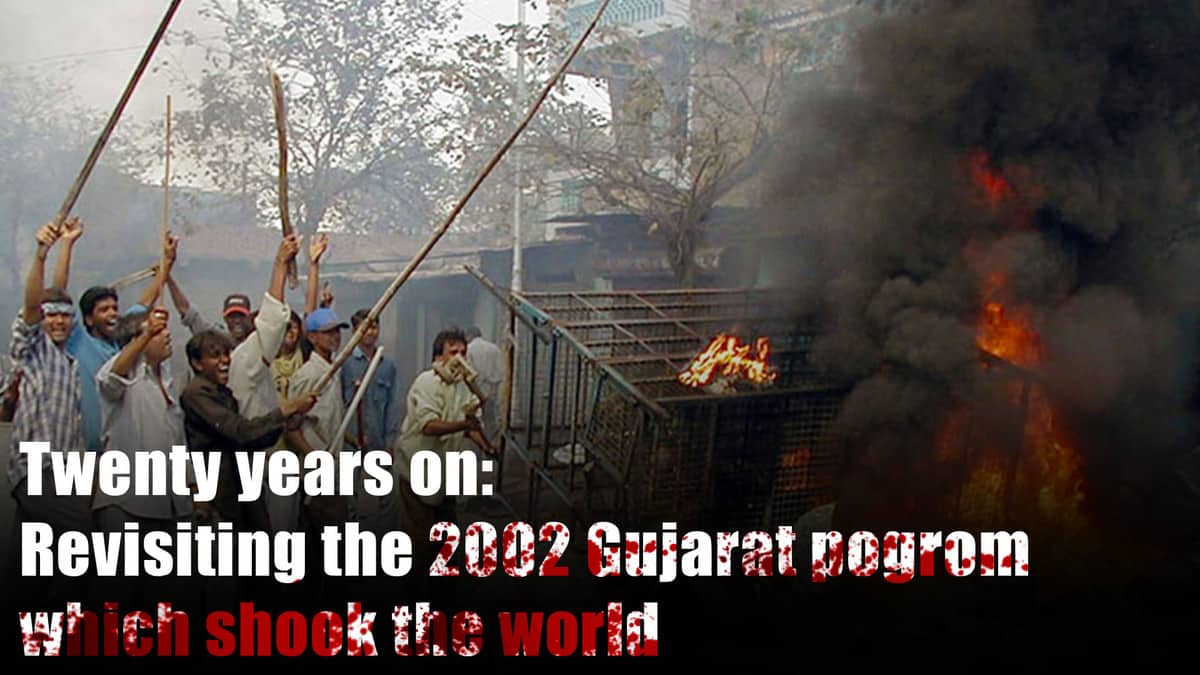
Hyderabad: It has been twenty years since the Gujarat pogrom took place that was sparked by the burning of a train on February 27, 2002. The attempt today, is to revisit the horrors and make sense of it from people who were present at the time.
This becomes all the more important considering that the riots of 2002 made Narendra Modi, the supreme leader he is today.
Thousands of people were slaughtered in broad daylight, women and girls were mass-gang-raped on the streets before having their bodies shred apart, children were burnt alive as their family members were forced to watch while they hemorrhaged towards death.
The Siasat.com reached out to Kingshuk Nag, who was then the resident editor of The Times of India, in Ahmedabad, at the time when the events unfolded. Editor-in-chief, The Siasat Daily, Zaheer Ali Khan, and Dr. Sattar Khan, founder of MESCO, in their interview with Siasat.com also recalled the events from their time on the ground as they set foot post the riots to provide relief to the survivors of the genocide.
“First thing that I noticed in Gujarat when I arrived in 2000, was that it was a very polarized society, Hindus and Muslims didn’t mix together as they did in the rest of the country. It was clear that there were tensions between both the communities, however, there are exceptions, where they mixed together, many Muslims worked for Hindu businesses,” Kingshuk Nag remarked.
Zaheer Ali Khan said that he was shocked to see such division in society in Gujarat, after having lived in Hyderabad. He said that areas were clearly demarcated as “Hindu” and “Muslim” with borders marked clearly.
Burning of the Sabramati Express train
On the morning of February 27, a train coming from Ayodhya full of Karsevaks was burnt on a platform on Godhra, in which 59 people, including nine men, 25 women, and 25 children were burnt alive.
Kingshuk Nag quoted a Deputy Inspector General (DIG), RD Aagjha, who was in charge of the investigation, who he found near the burnt train when he reached the spot, a month after the incident, as saying, “Unruly people live in Godhra… the crowded train arrived on the platform, they wanted to drink some tea and had an argument with a tea seller.”
Nag further quoted the DIG saying that subsequently, a scuffle broke out between the passengers and the people on the platform and one thing led to another, eventually stone-pelting happened and then the train was set on fire.
Following this incident, the Vishwa Hindu Parishad (VHP) declared a state-wide band, and Narendra Modi, who was the chief minister of Gujarat at the time, along with the rest of the Bhartiya Janata Party (BJP) leadership, alleged that the burning of the train was a terrorist attack.
It was further alleged that local Muslims collaborated with Pakistan’s intelligence to carry out the attack. According to the Nanavati Mehta commission, it was an act of arson committed by one or two thousand locals. However, the Concerned Citizens Tribunal and historian Ainslie Thomas Embree, said that it was an accident and there is no proof of it being a terrorist conspiracy.
There have also been allegations on the Vishwa Hindu Parishad, that instead of giving the burnt bodies of the victims of the Godhra train burning back to their families, they transported the bodies to Ahmedabad and put them on display to the public, to incite communal passion and start the pogrom. Reports also allege that the chief minister of Gujarat knew about it and let it happen.
The massacre and mass rapes
28 February onwards, violence engulfed the entire state. The Human Rights Watch said that when people called the police for protection, the only reply they received was “we have no orders to save you”.
“In some cases, the police even fired at Muslims who were trying to protect themselves,” the HRW said. Reports allege that the police and government officials directed the rioters and gave lists of Muslim-owned properties to them.
However, two massacres stand out from the rest in their brutality: Naroda Patya Massacre and the Gulberg Society Massacre. In Naroda Patya, according to official reports, 97 people were killed by 5000 rioters in a span of 10 hours. Unofficial reports claim much higher casualties. The Human Rights Watch claims that many people were burnt alive, individually or in groups by “chasing them into huge pits” and setting fire to them using LGP cylinders.
According to HRW and India Today, cases of hacking, looting, stabbing, and sexual assaults including public gang rapes in which the victims were burnt, had been reported.
Reports by The Hindu also suggested that women and girls were sexually assaulted, raped, and killed by burning or stabbing.
In Gulberg society, which was an upper-middle-class business society where according to official reports, 69 people were killed, and the then Congress member of parliament, Ehsan Jafri was hacked to death before being burnt.
The wife of Ehsan Jafri, Zakiya Jafri, has been fighting a legal battle for 20 years to bring justice to her martyred husband.
According to other reports, a curfew was allegedly declared in 27 towns and cities across the state. The army too was deployed in the areas was reportedly kept on hold until March 1.
Zaheer Ali Khan alleged that it was state-sponsored terrorism, however, Dr. Sattar Khan said that it was a state-organized, pre-planned genocide.
Despite all that transpired, there were various reports of heroism and hope, as Dalits and Hindus had shielded Muslims from the mobs, hid them away in their homes, and delivered them to safety.



